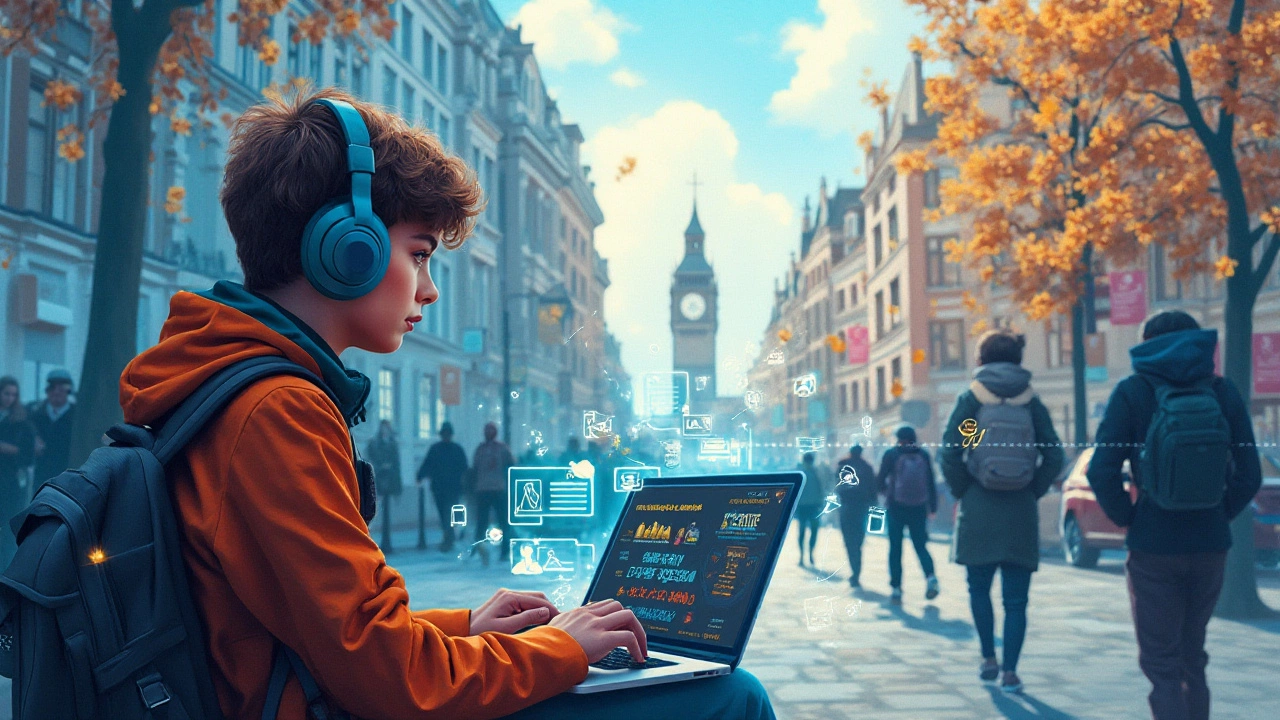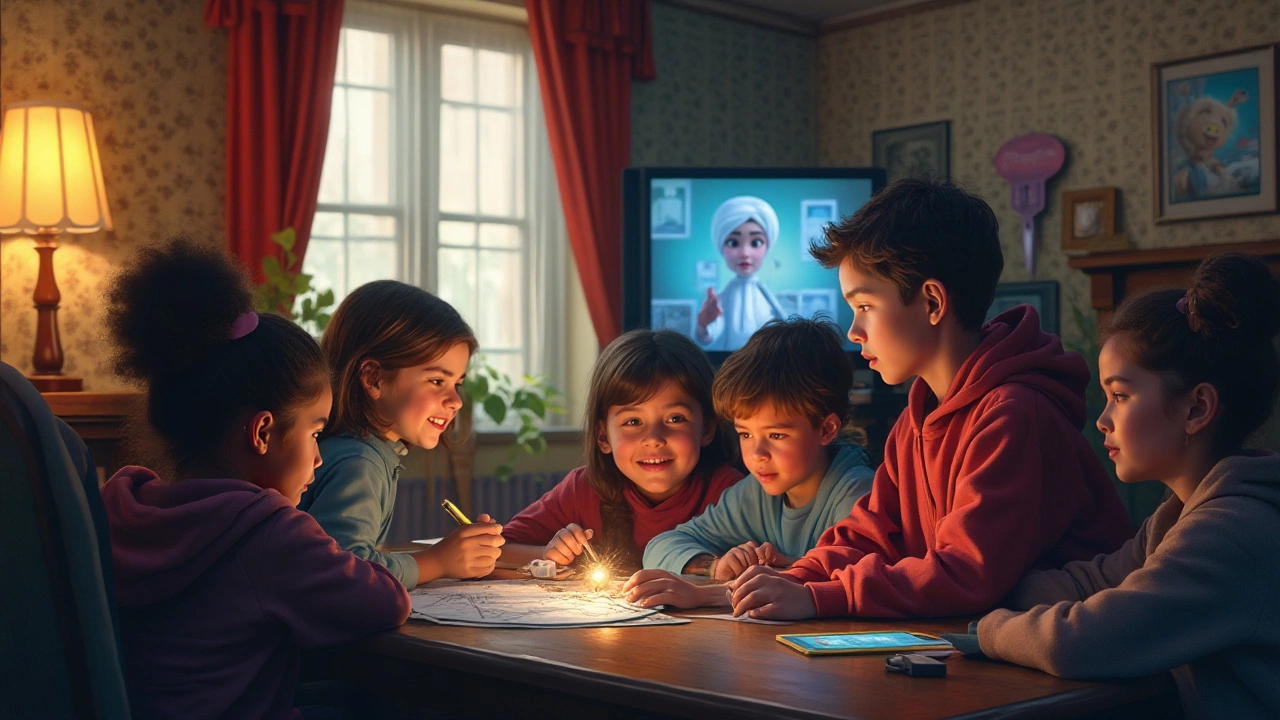The notion of learning from the comfort of one's home is no longer a futuristic dream; it's our present reality. As technology reshapes how we access and deliver education, many wonder if remote learning simply means no traditional school.
Could it be a more flexible and inclusive approach to education? Or does it tender a stark absence of interaction and engagement found in brick-and-mortar classrooms? As education continues to adapt, let's explore the multifaceted impacts and potential future of learning outside traditional settings.
- The Evolution of Remote Learning
- Impact on Student Engagement and Learning
- Benefits and Challenges of Remote Education
- Tips for Successful Remote Learning
The Evolution of Remote Learning
Remote learning, once considered a novel idea, has now become an integral part of the global education system, thanks to the growing reach of the Internet and digital technology. The roots of distance education trace back to the 19th century, when correspondence courses offered a lifeline to individuals outside urban centers. Students would receive lessons via post, complete assignments, and mail them back to instructors. Though rudimentary, this method laid the groundwork for today's digital learning landscape.
The evolution gained momentum in the late 20th century when television, radio, and recorded lectures began supplementing traditional learning. A major leap occurred with the advent of personal computers and the Internet in the 1990s. Educational institutions started to experiment with online courses, testing the waters of what was possible in the virtual realm. Public interest surged in remote learning when the Open University in the United Kingdom emerged as a pioneer in offering online degrees, setting a precedent that inspired universities worldwide to explore this space.
The transformation picked up extraordinary speed in the early 2000s, with the era of Internet expansion and technology democratization. Online learning platforms such as Khan Academy and platforms like Coursera and edX offered Massive Open Online Courses (MOOCs), providing access to free educational resources on a global scale. These platforms became the building blocks of what education could achieve, with millions enrolling, drawn to the promise of learning at their own pace. An article from The New York Times hailed 2012 as “the Year of the MOOC” for the boom in this remote learning phenomenon.
"Education is no longer limited by walls of the classroom; it lies at our fingertips," said Dr. Terry Anderson, a respected researcher in distance education. His insight illustrates how the shift to digital learning has transformed the landscape of education into a boundlessly accessible entity.
The COVID-19 pandemic acted as a catalyst that accelerated the adoption of remote learning technologies on an unprecedented scale. Educational institutions worldwide were thrust into the digital realm, and the implementation of platforms like Zoom and Google Classroom became ubiquitous. The necessity of adapting to unforeseen circumstances highlighted both the potential and the pitfalls of remote learning. During 2020, US educational institutions witnessed a 93% increase in technological integration, according to the eLearning Industry Report, illustrating the rapid transition schools had to undergo.
This evolution has paved the way for innovative, interactive, and immersive educational experiences, molding a new generation of lifelong learners. In this ongoing journey, questions still arise about the effectiveness of remote learning in replicating the social and collaborative environment of traditional schools. As we advance, the integration of artificial intelligence and virtual reality could further enrich how remote learning is delivered.
Impact on Student Engagement and Learning
The shift from traditional classrooms to remote learning environments has significantly altered student engagement dynamics. With virtual classrooms, students are not just passive recipients of information but active participants, navigating through digital platforms that demand an entirely new set of skills. The ability to self-regulate and maintain motivation without physical presence has become critical. While some students thrive in this kind of environment, showcasing increased productivity and enthusiasm, others face challenges in maintaining focus, attributed mainly to distractions present in home settings.
Engagement in online learning often hinges on the accessibility and usability of digital tools. Students now deal with a blend of live sessions, pre-recorded videos, and interactive assignments. While these resources open up new possibilities for personalized education, they can also create barriers for those lacking adequate internet access or technology literacy. Interestingly, data from the National Education Technology Plan indicates that about 70% of teachers report increased student participation when educational technology is employed effectively.
In light of these developments, remote education strategies must emphasize interactivity and community building. Encouraging collaboration through group projects and discussions can replicate the social learning aspects typical in physical classrooms. Platforms that enable easy communication among peers and instructors support this dynamic, fostering a sense of belonging and intellectual stimulation. On this note, a survey conducted by Online Learning Consortium found that over 60% of students expressed satisfaction from courses that actively integrated community interaction.
The psychological aspect of learning remotely cannot be ignored. The absence of a physical school environment can lead to feelings of isolation and detachment, impacting students' mental well-being and academic success. Schools and educators can address this by incorporating regular check-ins and providing mental health support systems. As noted by education expert Dr. Susan Allen, "While technology connects us, it's interpersonal connections that truly motivate and support students in their learning journey." Implementing measures such as virtual office hours or counseling sessions can help mitigate potential emotional distress.
Ultimately, the impact of remote learning on student engagement is profound and multifaceted. It presents educators and institutions with the opportunity to rethink and redesign educational approaches tailored to modern needs. As we continue to navigate the digital education landscape, fostering an inclusive, engaging, and supportive learning environment becomes not just a goal but a necessity. It requires a concerted effort from educators, students, and policymakers alike to harness the full potential of distance learning in shaping the future of education.

Benefits and Challenges of Remote Education
The rise of remote learning has brought a dramatic shift to the educational landscape, bringing with it a blend of newfound advantages and distinct challenges. As we delve into this new era, we start to see that one of the primary benefits of remote learning is its flexibility. Students have the freedom to set their schedules, allowing them to balance school with other responsibilities such as work or family. This flexibility is particularly beneficial to higher education students, who often juggle various commitments. In addition, the convenience of learning from home can reduce the commute time, offering more hours in the day for personal use. On the downside, this flexibility can sometimes lead to procrastination. Without the structured schedule of a traditional classroom, some students may struggle to maintain discipline, leading to potential downfalls in their educational progress.
Moreover, remote learning provides a significant advantage in accessibility. For students in remote areas or those with disabilities, attending school physically can present numerous challenges. Online learning cuts through these barriers, making education accessible to a broader audience. Many institutions now offer a variety of courses online, some even from prestigious universities, allowing learners across the globe to benefit without relocating. A reputable study from the National Center for Education Statistics noted that in 2021, about 75% of students participated in some form of e-learning, illustrating the reach and popularity of this model. Yet, accessibility is not devoid of challenges. Technological requirements can become a hurdle, as not all students have access to the necessary devices or reliable internet connections, creating a digital divide that educators and policymakers must address thoughtfully.
Remote education also empowers the use of diverse and innovative teaching resources, making learning more engaging and interactive. Educators can incorporate multimedia resources, gamified learning environments, and interactive assignments that cater to different learning styles, a feat often more challenging in traditional settings. These dynamic tools can enhance understanding and retention of information, as students can learn at their own pace. Nevertheless, one of the most significant hurdles remote learning faces is the lack of face-to-face interaction. The absence of a physical classroom environment can lead to feelings of isolation, as students miss out on the social aspects and peer interactions naturally found in in-person settings. This makes it imperative for educators to foster virtual communities and ensure students feel connected, even from afar. As Jane Bozarth, a noted instructional designer, once said,
"The aim is not information overload but rather engaging learners in meaningful ways."
Finally, evaluating educational performance presents both gains and challenges in a remote context. The shift to online platforms allows for automated and immediate feedback on quizzes and assignments, helping students track their progress efficiently. Teachers can use data analytics to understand individual learning patterns, thereby offering more personalized support. However, there are challenges in ensuring the integrity of assessments conducted remotely. Concerns about cheating and the true measure of a student's capabilities in an unsupervised environment arise, presenting a hurdle that tech solutions continue to address but with mixed effectiveness. As such, creating authentic assessments that genuinely reflect students' knowledge and skills becomes essential in fostering an effective remote learning environment.
Tips for Successful Remote Learning
Diving into the world of remote learning can initially feel like entering a labyrinth, but with the right strategies, it becomes a treasure trove of opportunities. Establishing a consistent routine is fundamental. A regular schedule helps emulate the traditional classroom environment, making transitions between different subjects and activities smoother. Designate a dedicated study space, preferably one that is quiet and free from distractions, to enhance concentration and productivity. In this personal learning sanctuary, keep all necessary materials and devices within reach, creating a workspace that fosters focus and efficiency.
Leveraging technology effectively is another key component of thriving in online learning. Familiarize yourself with the platforms and tools used in your virtual courses. Many apps assist students in organizing their tasks, scheduling reminders, and even collaborating on projects. Regular breaks should be part of your schedule to avoid burnout; adopt the Pomodoro technique, where work intervals are split with short breaks, to maintain high levels of attentiveness. Remember, clear communication with instructors is vital. Always feel free to ask questions, request feedback, and engage in discussions to enrich learning experiences.
As social creatures, we crave interactions, making socialization another important factor in keeping remote education engaging. Virtual study groups can fulfill this need, providing a platform for discussing courses, sharing notes, and helping friends tackle challenges. Join online forums or educational groups related to your field of study to stay engaged and connected with your peers. A mix of asynchronous and synchronous learning methods can resolve conflicts across time zones, allowing for more diverse participation in class activities.
"Remote learning challenges students to be self-motivated and disciplined while offering unprecedented access to a world of knowledge," highlights Dr. Susan Moore, an education consultant and author of 'The Digital Path to Education'.
Recognizing the importance of mental health and self-care cannot be overstated in maintaining a healthy balance in the virtual learning environment. Monitor stress levels and take conscious efforts to mitigate them through physical activities, hobbies, or contacting mental health resources if necessary. After all, a healthy mind is as crucial as a conducive learning environment in ensuring success on this educational journey. Integrate these elements to create a rewarding and effective learning experience from the comfort of your home.
